Advent - Ethiopian Illuminated Gospel
Ethiopian Illuminated Gospel Book
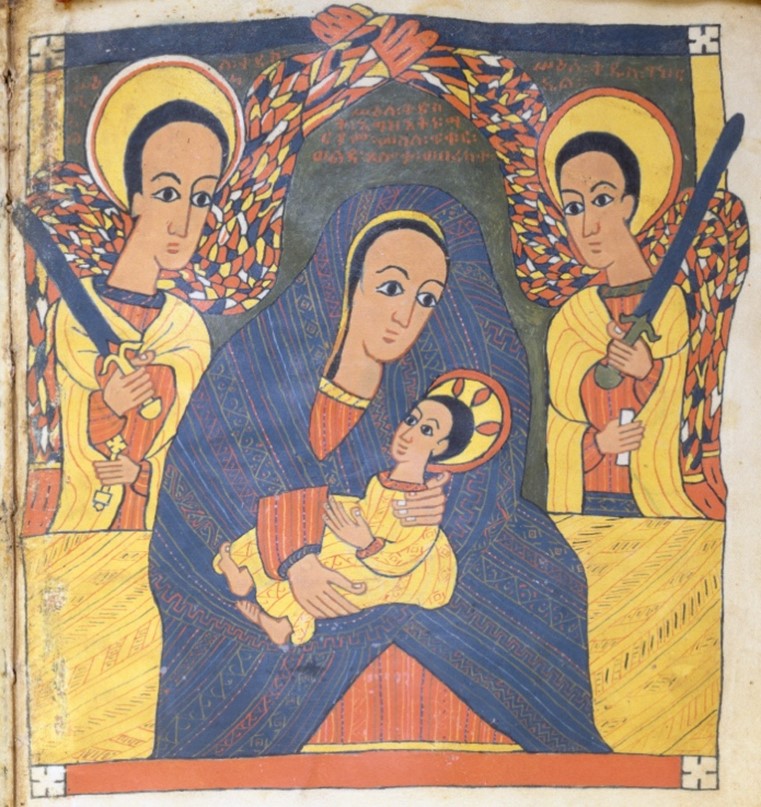
The Presence of Eternity
by James Romaine
This image of the Virgin and Child, flanked by the sword-bearing Archangels Michael and Gabriel, is from an Ethiopian Illuminated Gospel Book. In this manuscript, several sacred images accompany Scripture text written in Gǝ‛ǝz, the traditional liturgical language of the Ethiopian Orthodox Church.
Let’s briefly consider how these images might have served the spiritual life of its presumed Ethiopian Orthodox believer, as well as how this work might inspire us at the beginning of Advent.
The infant Christ, the Virgin Mary, and both archangels, are represented as Ethiopian. Across the history of Christianity and the visual arts, we find biblical narratives and sacred persons depicted as belonging to the spiritual community and religious culture of the artist. This fulfils a purpose of sacred art, namely of making the invisible accessible to the presumed worshiper.
Furthermore, this image evidences an Ethiopian Orthodox aesthetic. This is a liturgical visual language, not a pictorial or narrative-oriented method. Representing Christ and Mary in the manner of an Orthodox icon, this image emphasizes design rather than illusion. The highly saturated colors, pictorially flat forms, and a rich use of geometric patterning all visually participate in the Orthodox liturgy for which this illuminated manuscript was created.
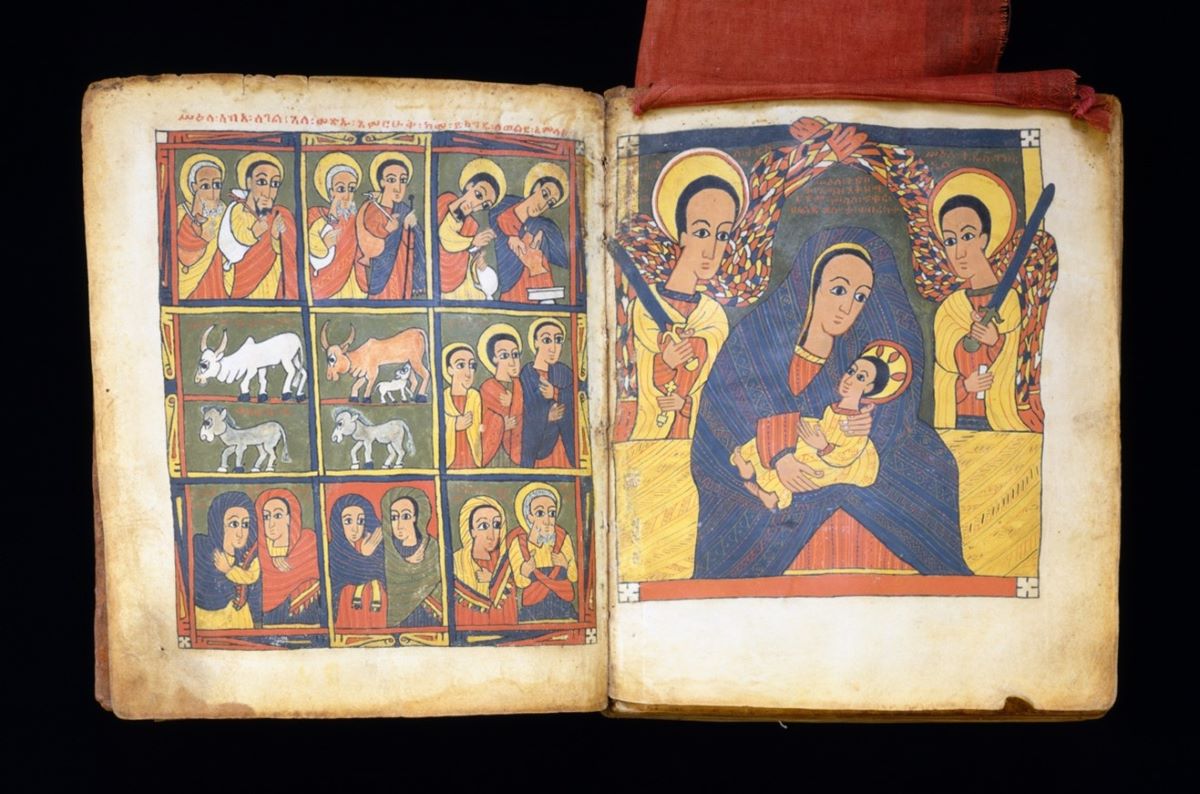
In addition to the image of Virgin and Child, this Illuminated Gospel Book features several other images. On the facing page, there are nine images, arranged in three rows. All depicting persons who are associated with the biblical account of the birth of Christ.
Across the top row, we see the journey and adoration of the magi. Looking carefully, we can see that there are three magi. One of the magi is older, one is middle aged, and one is younger. Each magus is depicted twice. The center row is dedicated to nativity animals and worshiping shepherds. The bottom row includes two scenes of the Virgin Mary with her cousin Elizabeth. And there is one image of Mary and Joseph. Following tradition, Joseph is an elderly man.
Scattered across the manuscript, which is predominantly composed of script, are illuminated icons of other sacred motifs. These pages of brilliant color unexpectedly burst forth from amongst the pages of text, as if the Scriptures were opening up to reveal a further sacred dimension. Gospel motifs illuminated here include Christ’s Transfiguration, Crucifixion and Ascension.
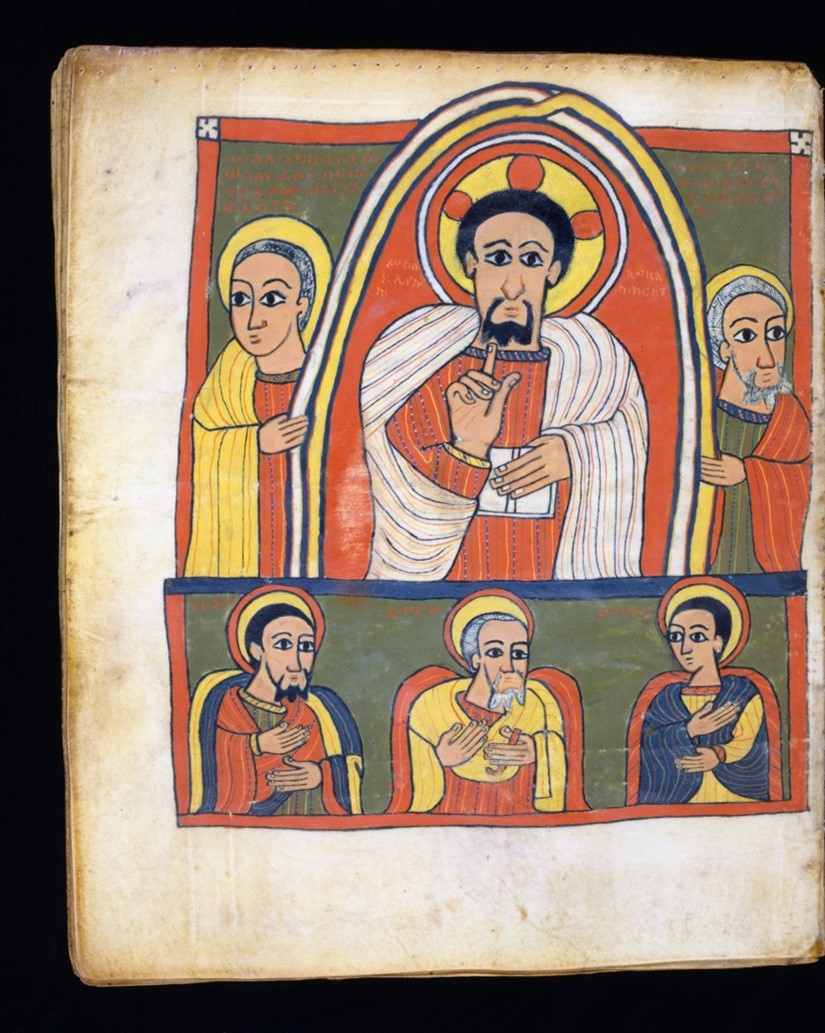
Supporting the devotional purpose of this manuscript, note how the transfigured Christ directly addresses the presumed believer. Standing to Christ’s left and right are Moses and Elijah. These prophets seem to each be clutching the edge of Christ’s mandorla, as if they were holding up curtains that separate us from the realm of radiance in which the transfigured person of Christ is present. Perhaps the artist who contributed to this manuscript intended for this image itself to be a revelation of eternity.
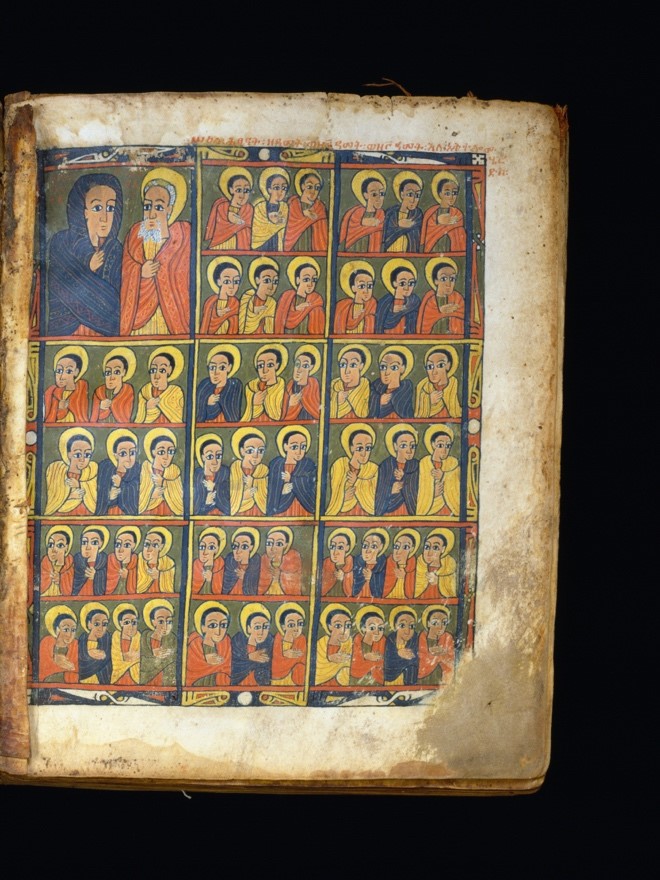
One of the most unexpected motifs in this Gospel Book is the congregation of boys martyred by King Herod. Rather than depicting a narrative scene, this page presents the youthful saints in heaven. The violence of their murder, which is often the focal point of many visual treatments of this motif, is entirely absent here. Rather than looking into the past, to the historical event in Bethlehem, this image spiritually orients the believer forward into the future, when every tear is wiped away and temporal wounds are transformed into marks of glory.
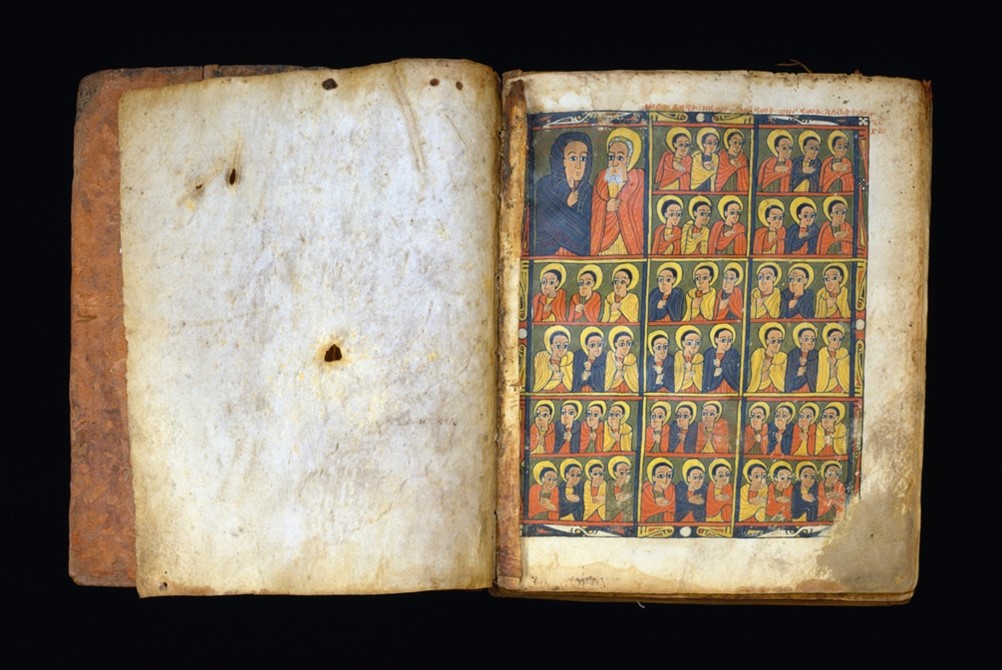
These saints are assembled as if in the act of worship; however, the facing page, in the current state of this early-16th century manuscript, is empty. Since parts of this manuscript are known to be missing, one wonders if there was perhaps an image of Christ in majesty on the facing page. As if Christ were welcoming them, and us, into paradise.
With this reorientation of our sense of time that we encounter in the image of the innocent martyrs, let’s look again at the image of the Virgin Mary and Christ child. The Archangels Michael and Gabriel form an arch of protection, or canopy of honor, over Mary and Christ. They create a visual symmetry that orients the viewer toward the center of the icon. The result is a spiritual stillness. Instead of reading this icon as a moment within a narrative, that is, a memento of Bethlehem, we are drawn towards the presence of eternity.
Through this illuminated manuscript, the presumed Ethiopian Orthodox residents of the monastery at Gunda Gunde would have been presented with a vision of sacred majesty. And for the modern viewer, especially in this Advent season, this image invites us not only to remember the temporal past described in the events of the Christ’s birth but anticipate a future glory.
*******
Ethiopian Gospels, first half of the 16th century (Stephanite). Ink on heavy, thick parchment between plain wooden boards with remains of leather on the upper board and red textile on the inside. Closed H: 11 13/16 x W: 10 3/16 x D: 3 1/2 in. (30 x 25.9 x 8.9 cm); Display, open H: 11 7/8 x W: 16 5/16 x D: 8 9/16 in. (30.2 x 41.5 x 21.8 cm); Box H: 13 1/16 x W: 11 3/4 x D: 4 11/16 in. (33.2 x 29.9 x 11.9 cm). Walters Art Museum, Baltimore, MD. USA.
This illuminated manuscript was created in an Orthodox monastery at Gunda Gunde. Located in a remote region of the northern most part of Ethiopia, this monastery was founded as a refuge from religious persecution. While the artist, or artists, who created this manuscript are unknown, we might presume that these illuminated images, and their accompanying text were designed to be an instrument for prayer and veneration. A PFF of the entire manuscript can be downloaded from the museum’s website. https://art.thewalters.org/detail/31403/ethiopian-gospels/
Dr. James Romaine is a Professor of Art History at Lander University in South Carolina, USA. He is a co-founder of the Association of Scholars of Christianity in the History of Art (ASCHA). His publications include Beholding Christ and Christianity in African American Art (Penn State University Press, 2018) and Art as Spiritual Perception: Essays in Honor of E. John Walford (Crossway Books, 2012). His Art for Advent videos can be found at Seeing Art History on YouTube.
First Sunday of Advent: Ethiopian Art: Introduction, The Annunciation
Second Sunday of Advent: Ethiopian Art: Diptych Icon of Mary and Christ
Third Sunday of Advent: Ethiopian Art: Gospel Book
Fourth Sunday of Advent: Ethiopian Art: The Rock-Cut Church of Saint George
ArtWay Visual Meditation 3 December 2023






